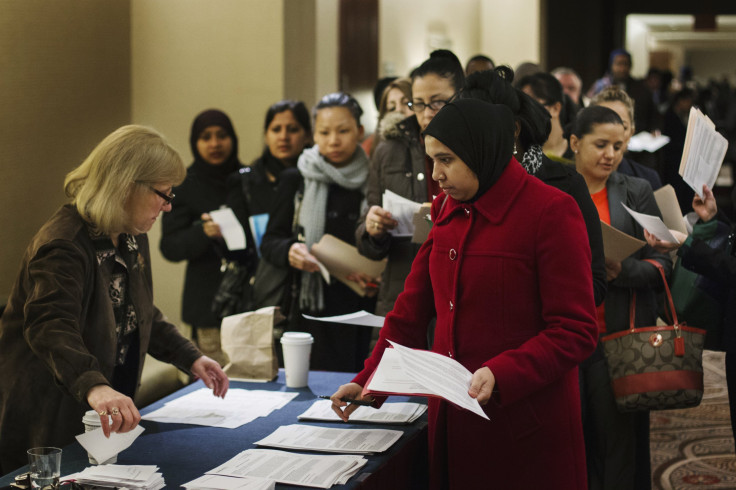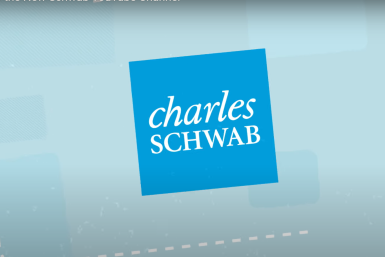US August Jobs Report 2013: 169k Nonfarm Payroll Growth, Unemployment Rate Drops To 7.3%

August’s unexpectedly sour jobs report, the final critical data point informing the Federal Reserve’s timing on slowing its stimulus program, showed only modest job gains, big downward revisions to prior two months and a decline in labor force participation rate, leaving the Fed with mixed signals.
Most observers expect the Fed to sound the retreat at its two-day meeting that ends Sept. 18. Steve Blitz, chief economist for ITG, thinks there is a possibility that the Fed could even push the start date out to next year.
“It’s not a good report and the Fed will probably try to hit a middle ground,” Blitz said. “They won’t take it [QE tapering] off the table, but they will probably push the start date out to next year.”
“Nothing in this report tells you that the acceleration in the second half of the year that everybody was looking for is here,” He added.
The U.S. economy created 169,000 jobs last month, up from the 162,000 tally for July, but missed economists’ expectations of 180,000. The jobless rate fell to 7.3 percent, the lowest since December 2008, and less than estimates that it would hold steady at 7.4 percent. However, it fell for the wrong reason. The labor force participation rate, which gauges the proportion of population in the labor force, fell to 63.2 percent from 63.4 percent in July, the lowest since August 1978.
Capital Economics’ Paul Ashworth is on the other end of the spectrum.
“We still expect the Fed to go ahead with the taper later this month,” Ashworth said. “Our best guess is that the cumulative evidence of improvement over the past year will convince a majority of officials that the tapering should begin at the next Federal Open Market Committee meeting in another couple of weeks' time, but we're not going to pretend this is a certainty.”
Since the start of the most recent round of QE, the unemployment rate has dropped to 7.3 percent from 7.8 percent.
Chicago Fed President Charles Evans, who is a voting member this year on the FOMC, was in the midst of a Q&A session when the employment report came out. Evans said the August jobs report is a "useful piece of information" for FOMC.
Average hourly wages rose 5 cents to $24.05, while the average workweek edged up 0.1 hour to 34.5 hours.
Frustrated with the slow U.S. economic recovery, the Fed is now buying $40 billion in mortgage-backed securities and $45 billion in Treasuries per month to support broader investment, hiring and growth. The quantitative easing program has more than tripled the Fed’s balance sheet to $3.2 trillion. The central bank has set its conditional thresholds for the end of QE and for the first rate hike based on the unemployment rate (7.0 percent and 6.5 percent, respectively).
Reasons The Fed Won’t Taper In September
The Fed’s Sept. 17-18 meeting comes at a very awkward time and risks are building up.
August jobs report mixed. The labor market is stagnant and just isn't growing at a pace that suggests a strong and sustainable economic recovery. The labor-force participation rate fell to 63.2 percent, the lowest rate in 35 years. The gains in the preceding two months were revised down by a cumulative 74,000. In particular, the new monthly figure for July is 104,000 jobs added, the lowest increase in more than a year.
Blitz also noted that the employment population ratio for 25-34 year olds – the people that are driving home sales and auto sales -- ended last year at 75.6 percent and now it’s at 74.8 percent. “It’s dropped successfully every month now since May,” Blitz said.
The recent data have been weak. In the past three quarters, gross domestic product growth has accelerated from 0.1 percent to 1.1 percent to 2.5 percent. The economy seems to have the kind of growth momentum the Fed is looking for. However, since the Fed met at the end of July, more than half of the growth indicators and three-quarters of the inflation indicators have come in below consensus expectations. Bank of America Merrill Lynch’s Ethan Harris forecasts third-quarter GDP growth will slow to 1.7 percent. Even with the better second-quarter GDP number, the FOMC will probably revise lower its growth and inflation forecasts at the September meeting.
“The Street was pretty much in line with the idea that the economy was going to accelerate in the third quarter and the string of data we’ve gotten except for auto sales, which was a little skewed because of the seasonality that put the Labor Day weekend in August of this year while it was in September of last year, is telling us, just like the July data told us, that there is no acceleration. The economy just continues to run at this 2 percent real rate of growth,” Blitz said.
The budget battles will be in full force. Congress will be back in session on Sept. 9. Last week the U.S. Treasury informed Congress that the federal government will run out of money if the debt ceiling is not raised by mid-October. While investors, consumer and business confidence have become relatively immune to threats of shutdown, Harris thinks an actual shutdown -- lasting more than a couple of days -- could cause a significant risk-off trade in the markets and could curb some hiring and investment plans.
Interest-sensitive sectors feeling the pain. The Fed’s tapering talk has caused about a 100 basis points rise in longer term interest rates, which could lead to weakness in interest-sensitive sectors such as autos, housing and capital goods investment. Recent housing data have shifted from steady strength to mixed: The homebuilder survey hit a new cyclical high in July, but the pace of housing starts has flattened out in recent months, and mortgage applications for both refinancing and purchasing have been slipping since May. A Reuters survey published last Wednesday forecast the 30-year fixed mortgage rate averaging 4.17 percent in 2013, jumping to 4.90 percent in 2014. In the May poll, economists had forecast it averaging 3.58 percent this year.
Geopolitics heating up. Oil prices have already picked up, to $117 per barrel from $105 a few weeks ago, and the crisis in Syria will likely escalate in September. According to Capital Economics economist Paul Dales’ calculation, such a rise in the oil price is consistent with gasoline prices increasing from $3.60 a gallon to around $3.80. “Just to buy the same amount of gasoline, households would have to cut spending on other items by $20 billion a year, or 0.2 percent,” Dales said in a note to clients.
Emerging market sell-off. Expectations that the Fed is about to end the flood of cheap money has triggered a sell-off in emerging market assets. The concern is that weaker growth in emerging markets will also hit growth in the U.S.
© Copyright IBTimes 2024. All rights reserved.












